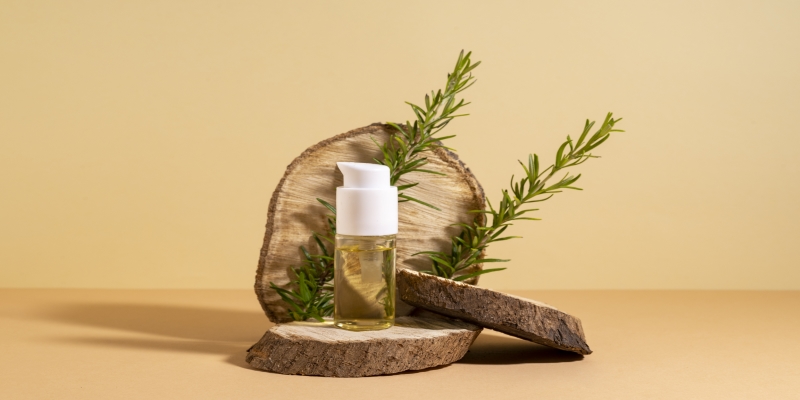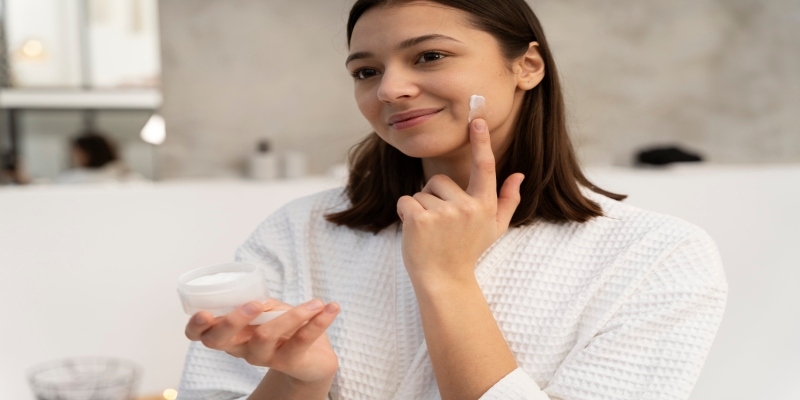Ingrown hair cysts are a common and frustrating skin issue that many people face. These cysts can cause discomfort, redness, and sometimes even pain. If you've ever experienced one, you know how bothersome they can be.
 This guide will help you understand what ingrown hair cysts are, how to identify them, and, most importantly, how to treat and prevent them.
This guide will help you understand what ingrown hair cysts are, how to identify them, and, most importantly, how to treat and prevent them.
What Are Ingrown Hair Cysts?
An ingrown hair cyst forms when the hair curls back into the skin instead of growing out. This can lead to a cyst, which is a small, round bump under the skin. These cysts are often filled with pus and can become quite large and painful. They typically occur in areas where hair is frequently shaved or waxed, such as the face, neck, armpits, and pubic area. Unlike a simple ingrown hair, which usually resolves on its own, an ingrown hair cyst can persist and may require treatment.
Identifying Ingrown Hair Cysts
Recognizing ingrown hair cysts is essential for proper treatment. These cysts can be mistaken for other skin issues, so understanding their features is important.
Appearance
Ingrown hair cysts are small, round bumps that can be flesh-colored, red, or dark. They are larger and deeper than typical ingrown hairs.
Texture
These cysts are usually firm and tender to the touch. The skin around them may feel hard due to inflammation. If infected, they may become soft and filled with pus.
Location
Common areas for ingrown hair cysts include:
- Face and neck (especially in men who shave)
- Armpits
- Pubic area
- Legs
- Chest and back
Symptoms
Key symptoms include:
- Redness and swelling
- Pain or tenderness
- Pus or fluid, indicating infection
- Itching
Visual Clues
You might see hair trapped under the skin, appearing as a dark line or loop, though it may not always be visible if the cyst is deep.
Duration
An ingrown hair cyst can last weeks or months without treatment, unlike a simple ingrown hair, which usually resolves on its own within days.
Treatment Options for Ingrown Hair Cysts
Ingrown hair cysts can be uncomfortable, but several effective treatments can help manage them. Here are some practical methods:
Warm Compress
A warm compress helps soften the skin and open pores, encouraging the hair to surface. Soak a clean cloth in warm water and apply it to the cyst for 10-15 minutes, several times a day, to reduce swelling and promote healing.
Exfoliation
Gently exfoliating the area around the cyst can remove dead skin cells that clog hair follicles. Use a mild scrub or soft brush to help release the trapped hair and reduce the cyst's size. Avoid over-exfoliating, which can irritate the skin.
Topical Treatments
Over-the-counter products with salicylic acid or benzoyl peroxide can reduce inflammation and prevent infection. Apply these treatments as directed, usually once or twice a day.
Tea Tree Oil

Tea tree oil has anti-inflammatory and antibacterial properties. Dilute a few drops with carrier oil and apply to the cyst with a cotton ball once or twice a day to reduce inflammation and prevent infection.
Avoid Picking or Squeezing
It's important to resist the urge to pick or squeeze the ingrown hair cyst. Doing so can lead to further irritation, infection, and scarring. Instead, focus on gentle treatments like warm compresses and exfoliation to encourage the cyst to heal on its own.
Hydrocortisone Cream
For severe inflammation, over-the-counter hydrocortisone cream can help reduce swelling and redness. Apply a small amount of hydrocortisone cream to the cyst once or twice a day, following the instructions on the label. This can help soothe irritated skin and promote healing.
Antibiotic Ointment
If the cyst shows signs of infection, such as increased redness, warmth, and pus, applying an antibiotic ointment can help. Over-the-counter antibiotic ointments like Neosporin can prevent the infection from spreading. Apply a thin layer to the affected area after cleaning it with mild soap and water.
Medical Intervention
If home treatments do not improve the cyst, or if it is large, painful, or infected, seek medical advice. A doctor may drain the cyst or prescribe stronger medications. They might use a sterile needle to release the trapped hair or inject a corticosteroid to reduce inflammation.
Laser Hair Removal
Laser hair removal reduces hair growth, decreasing the likelihood of ingrown hairs. This procedure requires multiple sessions and is performed by a dermatologist or licensed technician.
Electrolysis
Electrolysis uses electrical currents to destroy hair follicles, preventing future hair growth. It also requires multiple treatments and is performed by a professional.
Preventing Ingrown Hair Cysts
Prevention is key when it comes to ingrown hair cysts. Here are some tips to keep your skin smooth and cyst-free:
Proper Hair Removal Techniques: When shaving, use a sharp, clean razor and shave in the direction of hair growth. Consider using an electric razor or hair removal creams as alternatives to shaving.

Exfoliate Regularly: Regular exfoliation can help prevent dead skin cells from clogging hair follicles. Use a gentle scrub or exfoliating cloth a few times a week.
Moisturize: Keeping your skin hydrated can help reduce the risk of ingrown hairs. Use a non-comedogenic moisturizer daily.
Loose Clothing: Wear loose-fitting clothes, especially after hair removal, to prevent irritation and reduce the risk of ingrown hairs.
Professional Hair Removal: If you frequently experience ingrown hair cysts, consider professional hair removal options like laser treatments. These methods can reduce the overall amount of hair and decrease the likelihood of ingrown hairs.
Conclusion
Ingrown hair cysts can be an uncomfortable and persistent issue, but with the right knowledge and techniques, they can be effectively managed and prevented. By understanding the causes, identifying the symptoms, and implementing proper treatment and prevention methods, you can keep your skin healthy and free from these troublesome bumps.
Remember, if your cyst does not improve or shows signs of infection, it's important to seek medical advice. Taking care of your skin and using proper hair removal techniques can go a long way in preventing ingrown hair cysts and maintaining smooth, clear skin.




